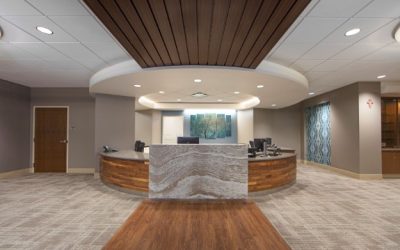Understanding the annual forecast and projected trends in the construction industry is a vital part of the strategic planning process. Keeping informed of things like policy changes, tariffs, and employment projections can help businesses plan ahead and improve profit margins throughout the year.
At The L.E. Smith Company, President Mari Ivan keeps a close watch on trends and industry forecasting. A few of the most notable outlooks for 2019 are summarized below.
Forecast for 2019 is cautiously optimistic
Although material costs and labor shortages will create some challenges in 2019, overall construction starts are expected to increase by approximately +3%. This number comes from the Dodge 2019 Construction Outlook Report. Similarly, it is expected that the Midwest region will experience construction starts at the same level as last year or at single-digit increases.
In a recent Vistage survey of over 1,200 CEOs, “‘Confidence with caution’ best captures the sentiment of U.S. small and midsize business CEOs in 2019.” Only 14% of surveyed CEOs expect to see improvement in the economy over the coming year. In spite of that low number, 70% still expect to see an increase in revenue.
Material costs are on the rise
Over a 10-year period, the construction industry enjoyed the benefits of slow rising material costs. Unfortunately, that trend has come to end. In 2017, material costs began increasing more steadily. In 2019, increased tariffs have contributed to much higher increases.
According to the Dodge 2019 Construction Outlook Report, “The higher cost of construction materials is also now part of the economic landscape, and is likely to remain present through at least 2019.” The report goes on to say that, “for the first nine months of 2018 versus the same period a year ago, the composite index is up 6.5%.” This is up significantly from the full-year of an average increase of 3.6% in 2017.
Although costs are on the rise, there is some relief for commercial projects. The Dodge 2019 Construction Outlook Report notes that “bank lending standards for commercial and industrial loans have eased,” which will allow for the funding of more commercial projects in 2019. LES clients have reported they have commercial construction projects booked through 2019 and into 2020.
Skilled labor shortages and shorter timelines create challenges
Although having projects booked through 2020 is a significant achievement, shortages in skilled labor are creating challenges within the industry. With more jobs available than there are people to fill them, talent management has become a vital component to business planning in the construction industry.
According to the Q4 2018 Vistage CEO Confidence Survey, 65% of CEOs indicated that they plan to hire expansively in 2019. In order to attract employees and maintain their workforce, they are also planning to offer higher wages and better benefits.
Although the CEOs polled were from a variety of small and midsize businesses, this trend holds true in the construction industry specifically. With a nationwide shortage of skilled labor expected to continue beyond 2019, attracting and retaining qualified workers is going to cost more than it has in the past.
Compounding the problem, customers are expecting construction projects to be completed within shorter timeframes. Jobs that would typically take 10 months are now expected to be completed 7 months. When skilled labor shortages push a job behind schedule, contractors are leaning more and more on casework and countertop professionals to make up for lost time.
This is where outsourcing work to companies like L.E. Smith can give contractors a competitive advantage. Finding a partner with industry leading turn times and a proven track record for meeting aggressive deadlines can help increase efficiency at a time when your project needs it most.
To learn more about how The L.E. Smith Company can contribute to your success in 2019, contact our team at https://www.lesmith.com/contact-us.



